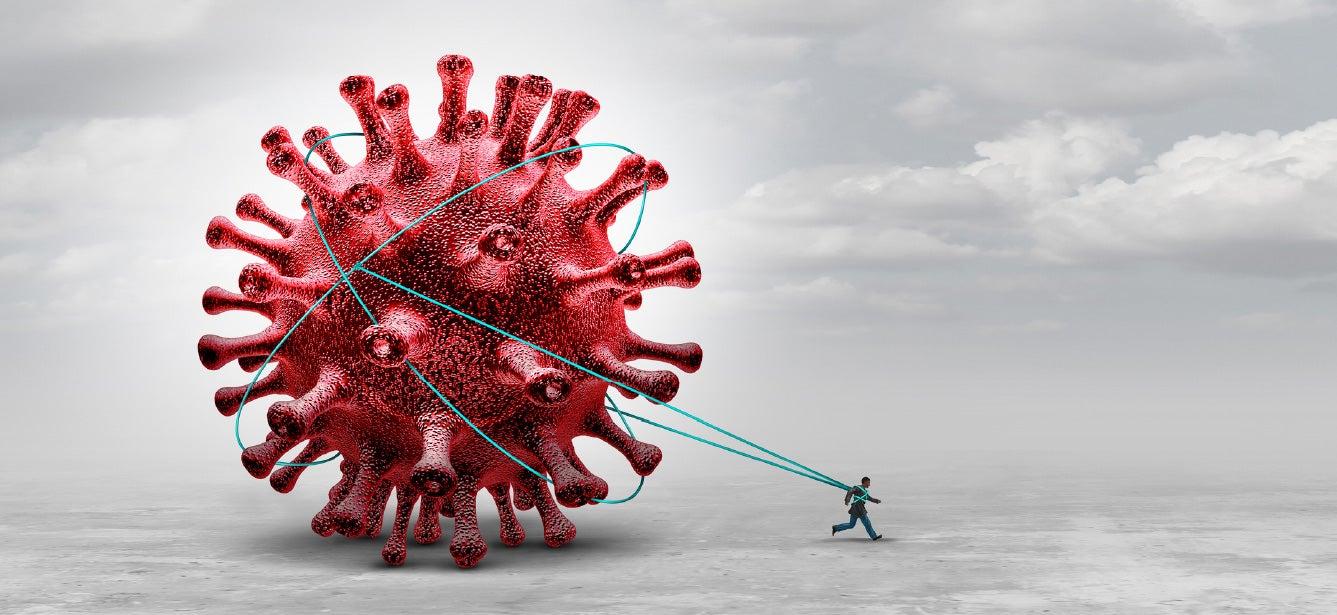
Which masks are safest during the COVID-10 pandemic? Is it time to upgrade my disposable mask? Are N95 masks the best protection against COVID-19? When and wear should I wear a mask? If you’re wondering about these things, you’re not alone.
When COVID-19 emerged onto the world stage in early 2020, experts advised wearing a face mask to protect other people. But it's now become clear that wearing a high-filtration, well-fitting mask can go a long way in protecting you as well. This is especially important for adults over the age of 65, people who are immunocompromised, and those with long-term medical conditions.
To help you make informed decisions about mask-wearing, we’ve compiled the latest Centers for Disease Control and Prevention (CDC) guidance on mask usage (updated in February 2022), the best face mask to wear, and where to find masks.
When should I wear a mask?
The science is certain: masks are still a vital tool in preventing infection and slowing the spread of SARS-CoV-2, the virus that causes COVID-19. CDC mask guidelines today state that you should wear a mask indoors in public spaces if:
- You're not up to date on your COVID-19 vaccines
- You have an underlying medical condition, such as diabetes, heart or lung disease, or have a weakened immune system
- You're in an area of high transmission
- You're using public transportation traveling into, within, or out of the U.S.
The CDC advises that in general, people do not need to wear masks when outdoors since the risk of transmission is low outside. However, if you're in an area of substantial transmission, you're in sustained close contact with others, or you or a household member is at high risk for severe disease from COVID-19, you should consider wearing a mask outdoors.
How do I know if I live in an area of high transmission?
The CDC tracks COVID-19 community risk levels as a tool to help individuals and communities decide what prevention steps to take based on the latest data. There are three risk levels: low, medium, and high.
| Risk Level | CDC's Mask Recommendation |
|---|---|
| Low (green) |
|
| Medium (yellow) |
|
| High (orange) |
|
People can choose to wear a mask at any time. It's recommended to stay up to date with your COVID-19 vaccine and to get tested if you have symptoms. People with symptoms, a positive test, or exposure to someone with COVID-19 should wear a mask.
To find out what level of risk your own county is, go to CDC.gov and select your state and county at the COVID-19 County Check, as shown below.

How effective are different-material face masks during the COVID-19 pandemic?
CDC mask guidelines today recommend wearing a mask that offers the optimal combination of protection and fit. In addition, it should be a comfortable mask that you’ll wear consistently.
What is the best mask to buy for COVID? There are a variety of masks available for use, each providing a different level of protection:
Cloth masks
Cloth masks should be made of tightly woven, multi-layered material that blocks light, with no vents/exhalation valves. They can be made from a variety of fabrics. The CDC advises only wearing clean, dry cloth masks that fit snugly over your nose, mouth, and chin. They should also have a nose wire to create a tighter fit over your nose and keep the mask from sliding down.
Disposable surgical masks
Does a surgical mask help you avoid COVID-19? According to the CDC, surgical masks (also called procedure or medical masks) can be worn if they are clean and dry and have multiple layers of non-woven material. Like cloth masks, surgical masks should fit snugly over your nose, mouth, and chin, with no gaps. The World Health Organization (WHO) recommends using a medical-grade face mask that complies with medical mask standards EN 14683 Type I, ASTM F2100 Level 1, YY/T 0969, or YY 0469 (or equivalent).
How can older adults achieve better protection using cloth and disposable masks? Wear two masks at once (i.e., a disposable mask with a cloth mask on top. You can also use masks that attach behind your neck and head with ties or elastic bands instead of ear loops. This ensures a closer fit.
What about N95 masks for COVID-19?
Disposable N95 masks (also called respirators) are National Institute for Occupational Safety and Health (NIOSH)-approved masks that provide highly efficient filtration of airborne particles. These high-filtration masks may also be called KN95s. The KN95 variety are certified in China instead of the U.S. but offer a comparable level of protection.
When worn properly, an N95 mask creates a tight protective seal around the nose and mouth. N95s filter out up to 95% of airborne particles when they fit properly—including SARS-CoV-2. They can also capture droplets and particles you breathe, cough, or sneeze out so that you don’t spread them to others. Due to its better filtration, an N95 mask can provide a higher level of protection than a cloth or surgical mask if it’s worn properly.
At the start of the COVID-19 pandemic when N95 masks were in short supply, they were not recommended for public use. However, now that these are widely available, recent CDC guidance states that people may opt for a disposable, approved N95 mask for personal use. In fact, given the highly contagious nature of the omicron variant, many experts are urging people to choose an N95 mask when indoors in a public setting.
When should you wear an N95 mask?
Some scenarios that warrant wearing an N95 mask versus a cloth or surgical mask include:
- You're at greater risk for severe illness from COVID-19 (e.g., you have an underlying condition such as diabetes).
- You're caring for someone with COVID-19.
- You're riding public transportation, especially crowded settings, for longer periods of time.
- You're working or volunteering in a setting where you are in constant contact with the public (e.g., a grocery store).
- You’re in a crowded environment where physical distancing is not possible.
- You're not up to date on your COVID-19 vaccinations.
When it comes to buying the best N95 mask for COVID-19, you need to shop carefully. Unfortunately, there are many counterfeit (fake) N95s for sale today. When purchasing a respirator mask, look for clear N95 markings or KN95 markings on the package and on the mask itself.
N95 masks can be reused—but should be discarded after five uses. They should also be disposed of when they are damaged, dirty, or difficult to breathe through.
Where can you get free N95 masks?
Similar to the decision to provide free COVID-19 tests, the U.S. government has issued the first wave of 400 million free, high-filtration N95 masks. These masks are now available in many community health centers and participating pharmacies across the country, such as Walgreens and Rite Aid.
Each person—even those from the same household—can pick up three (3) N95 masks at a time. There is no documentation required and insurance is not necessary. Call your local pharmacy or health center to find out if they have free N95 masks available for pickup.
In addition, masks are being distributed to persons with disabilities through community-based organizations and health care providers such as rural health clinics, community health centers, Area Agencies on Aging, and Centers for Independent Living. These organizations are helping distribute masks to people who cannot leave their homes, including older adults.




